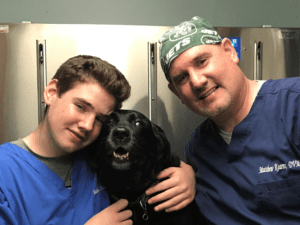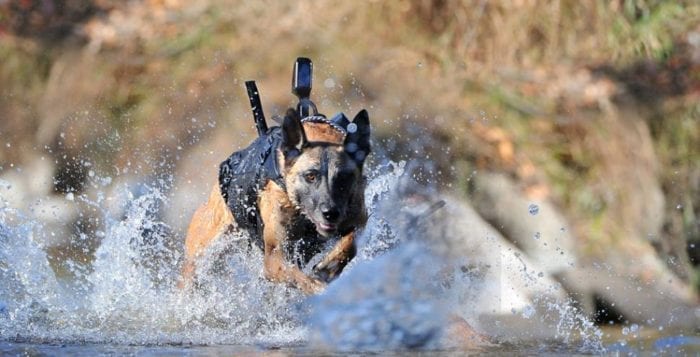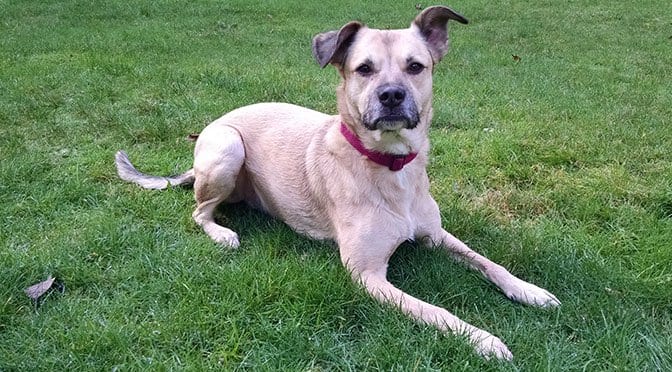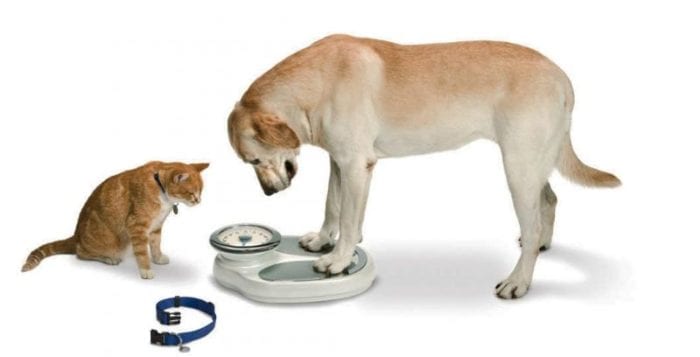By Matthew Kearns, DVM
 I recently watched the movie “Megan Leavey” and realized that although recent events have forced many Americans to take sides on loyalty to First Amendment rights versus loyalty to the flag (as it stands for the sacrifice the military, police and rescue services make on our behalf), one belief is united: Man’s best friend has always been there for us, especially in times of war.
I recently watched the movie “Megan Leavey” and realized that although recent events have forced many Americans to take sides on loyalty to First Amendment rights versus loyalty to the flag (as it stands for the sacrifice the military, police and rescue services make on our behalf), one belief is united: Man’s best friend has always been there for us, especially in times of war.
A quick review of dogs in the military reveals that their use goes as far back as the Egyptians (as seen in ancient murals) for both offensive and defensive purposes. The ancient Greeks, Romans, Attila the Hun, Spanish conquistadors, Napoleon and Frederick the Great all used dogs during times of war. These war dogs were unleashed on their enemies, used to guard prisoners and even to carry packs with supplies and messages.
In World War I dogs were used by the Germans to help the wounded on the battlefield. The Sanitatshunde, or “sanitary dogs” would head out onto battlefields in search of wounded soldiers. These brave dogs not only carried water and medical supplies to the wounded but also returned and guided soldiers to their injured comrades. One of the most famous American dogs, Rin Tin Tin, was actually rescued from a German training kennel by an American soldier at the end of the war.
The United States started incorporating dogs into the military services beginning in World War II. In 1942, the American Kennel Club and private citizens (including breeders and trainers) established the Dogs for Defense (DFD) organization. Later that year, the DFD was taken over by the U.S. Army Quartermaster. The dogs in the DFD were initially used for domestic sentry duty, but their role was quickly expanded to search and rescue, hauling, scouting and carrying messages. By 1944, thousands of military service dogs were used in the islands of the South Pacific and across Europe to help turn the tide of the war.
During the Korean War military dogs and handlers would routinely lead patrols to alert the troops of the possible presence of the enemy. This was expanded during the Vietnam War into what were termed Combat Tracking Teams (CTT).
The CTT consisted of a military dog, handler, team leader, visual tracker and radio operator. The job of this special unit was to make contact with the enemy, as well as detect any recent enemy activity in the area. Around this time the military also realized the canine’s sensitive sense of smell could be used for more than detecting the enemy. In 1971, programs were developed to teach military dogs to detect both bomb materials and narcotics. After the war U.S. Customs found these drug-sniffing dogs invaluable.
As recently as 2011 a military dog named Cairo (in photo above) was used in the SEAL team Operation Neptune Spear (which was responsible for killing Osama bin Laden). Today, military dogs are used in all capacities previously described. There are an estimated 600 military dogs on active duty right now in Afghanistan and Iraq. So, let’s tip our hats to these true American heroes.
Dr. Kearns practices veterinary medicine from his Port Jefferson office and is pictured with his son Matthew and his dog Jasmine.






 Marijuana has now become much more of a mainstay in the United States. Starting in 1937 marijuana was illegal throughout the United States. This lasted until the Compassionate Use Act was passed in California in 1996. There are now eight states (and the District of Columbia) that legally allow the use of recreational marijuana and 20 states that allow the use of medical marijuana.
Marijuana has now become much more of a mainstay in the United States. Starting in 1937 marijuana was illegal throughout the United States. This lasted until the Compassionate Use Act was passed in California in 1996. There are now eight states (and the District of Columbia) that legally allow the use of recreational marijuana and 20 states that allow the use of medical marijuana.
 Aaaah, summer’s here and we know it by the smells in the air. Tantalizing aromas of steak, sausage, chicken, burgers and dogs. After dinner it’s marshmallows (sometimes with graham crackers and chocolate). I don’t know anyone who doesn’t love it (including our pets). As gratifying as it is to have friends and family over, we have to be careful of our “unofficial tasters” hanging around the barbecue.
Aaaah, summer’s here and we know it by the smells in the air. Tantalizing aromas of steak, sausage, chicken, burgers and dogs. After dinner it’s marshmallows (sometimes with graham crackers and chocolate). I don’t know anyone who doesn’t love it (including our pets). As gratifying as it is to have friends and family over, we have to be careful of our “unofficial tasters” hanging around the barbecue.
 “My dog ate three grapes (or raisins). Should I be worried?” We get a phone call like this at least once every week to every other week. That’s a good question because we, as a veterinary community, are still looking for the exact answer. Let’s take a closer look at grape and raisin toxicity to see if we can shed some light on what we do know about this nebulous topic.
“My dog ate three grapes (or raisins). Should I be worried?” We get a phone call like this at least once every week to every other week. That’s a good question because we, as a veterinary community, are still looking for the exact answer. Let’s take a closer look at grape and raisin toxicity to see if we can shed some light on what we do know about this nebulous topic. Additional theories do not implicate anything in the grape itself, but rather the growth of certain fungi on the grape and toxins produced called aflatoxins, or pesticides sprayed on grapes. More recent evidence points toward something in the meaty portion of the grape or raisin because veterinary toxicologists found that raisins that have been cooked (in cookies, breads, cakes, etc.) are less toxic than grapes or uncooked raisins.
Additional theories do not implicate anything in the grape itself, but rather the growth of certain fungi on the grape and toxins produced called aflatoxins, or pesticides sprayed on grapes. More recent evidence points toward something in the meaty portion of the grape or raisin because veterinary toxicologists found that raisins that have been cooked (in cookies, breads, cakes, etc.) are less toxic than grapes or uncooked raisins.
 Spring has sprung and as I look at my waistline it is obvious I put on a few extra pounds during the winter months. Fighting obesity is a year-round battle in both people and pets. The questions arise however: Are there factors predisposing pets to obesity? If so, what are they?
Spring has sprung and as I look at my waistline it is obvious I put on a few extra pounds during the winter months. Fighting obesity is a year-round battle in both people and pets. The questions arise however: Are there factors predisposing pets to obesity? If so, what are they? In both cats and dogs the loss of certain hormones associated with the reproductive system will affect metabolism. Through studies it is estimated that the calorie requirements drop by about 25 percent after a spay or neuter.
In both cats and dogs the loss of certain hormones associated with the reproductive system will affect metabolism. Through studies it is estimated that the calorie requirements drop by about 25 percent after a spay or neuter.
 I was listening to the radio and a segment was introduced as “How a Mouse Plague Is a Forbidding Forecast for Lyme Disease in the Northeast,” predicting 2017 as a particularly risky year for Lyme disease. I had always focused on how close deer came to a dog owner’s property when discussing the risk of Lyme disease. I realize now that I must also ask about mice.
I was listening to the radio and a segment was introduced as “How a Mouse Plague Is a Forbidding Forecast for Lyme Disease in the Northeast,” predicting 2017 as a particularly risky year for Lyme disease. I had always focused on how close deer came to a dog owner’s property when discussing the risk of Lyme disease. I realize now that I must also ask about mice.
 I can’t even recall how many times a feline with a runny nose enters my clinic. A kitten is a little more straightforward as an infection is most likely the cause.But what happens when an adult cat presents? What if this cat is the only cat in the household? What if the cat never goes outside? This is when it gets interesting (and sometimes a touch frustrating).
I can’t even recall how many times a feline with a runny nose enters my clinic. A kitten is a little more straightforward as an infection is most likely the cause.But what happens when an adult cat presents? What if this cat is the only cat in the household? What if the cat never goes outside? This is when it gets interesting (and sometimes a touch frustrating).

 February is National Pet Dental Health Month; so I wanted to write an article on swellings of the oral cavity in dogs and cats. Swellings of the oral cavity are relatively common in dogs and cats. Some are tumors, some are not. Some are malignant, some are not. A fair number of cases of oral swellings are actually related to inflammation and not a tumor at all. Unfortunately, if these swellings are tumors, the majority of these tumors are malignant. This is why early diagnosis and treatment is so important.
February is National Pet Dental Health Month; so I wanted to write an article on swellings of the oral cavity in dogs and cats. Swellings of the oral cavity are relatively common in dogs and cats. Some are tumors, some are not. Some are malignant, some are not. A fair number of cases of oral swellings are actually related to inflammation and not a tumor at all. Unfortunately, if these swellings are tumors, the majority of these tumors are malignant. This is why early diagnosis and treatment is so important.

 It’s 2017 and time to start our New Year’s Resolutions!! We all know the struggle with the battle of the bulge. We all want to look and feel good. We all know that regular exercise and diet is the key to a long, healthy life. Well, our thinking in that regard should extend to our four-legged friends. Obesity in this country is as big a problem in dogs and cats as it is in ourselves.
It’s 2017 and time to start our New Year’s Resolutions!! We all know the struggle with the battle of the bulge. We all want to look and feel good. We all know that regular exercise and diet is the key to a long, healthy life. Well, our thinking in that regard should extend to our four-legged friends. Obesity in this country is as big a problem in dogs and cats as it is in ourselves. Pancreatitis, or inflammation of the pancreas, is a serious (sometimes life-threatening disease in dogs and cats) that is a risk with obesity. There is also a higher incidence of diabetes in obese dogs and cats. Thus is believed to be related not only to damage to the pancreas but also insulin resistance (as in humans). Although obesity does not directly effect the heart, obesity in a pet that has a pre-existing heart condition will hasten the progression to heart failure.
Pancreatitis, or inflammation of the pancreas, is a serious (sometimes life-threatening disease in dogs and cats) that is a risk with obesity. There is also a higher incidence of diabetes in obese dogs and cats. Thus is believed to be related not only to damage to the pancreas but also insulin resistance (as in humans). Although obesity does not directly effect the heart, obesity in a pet that has a pre-existing heart condition will hasten the progression to heart failure.


